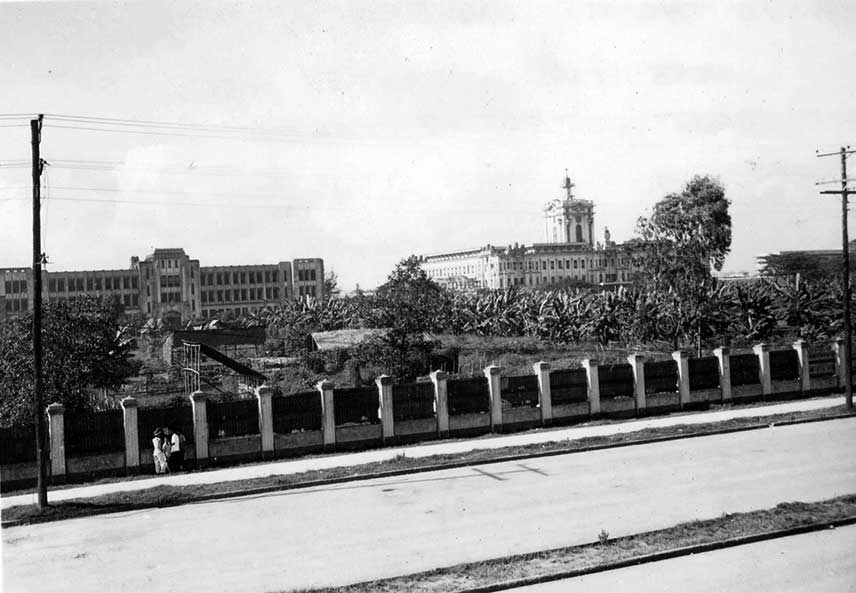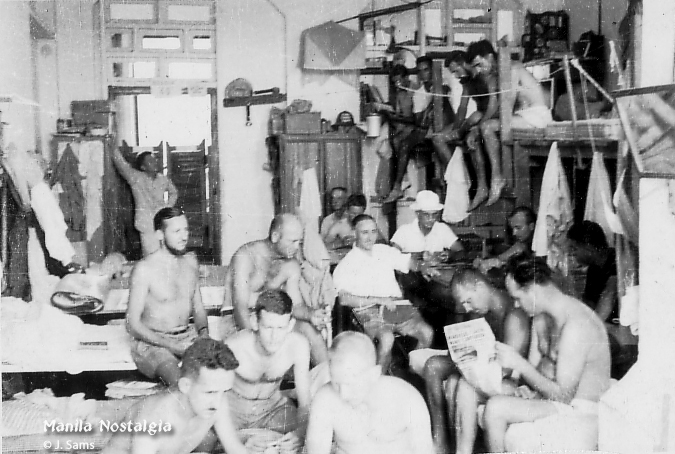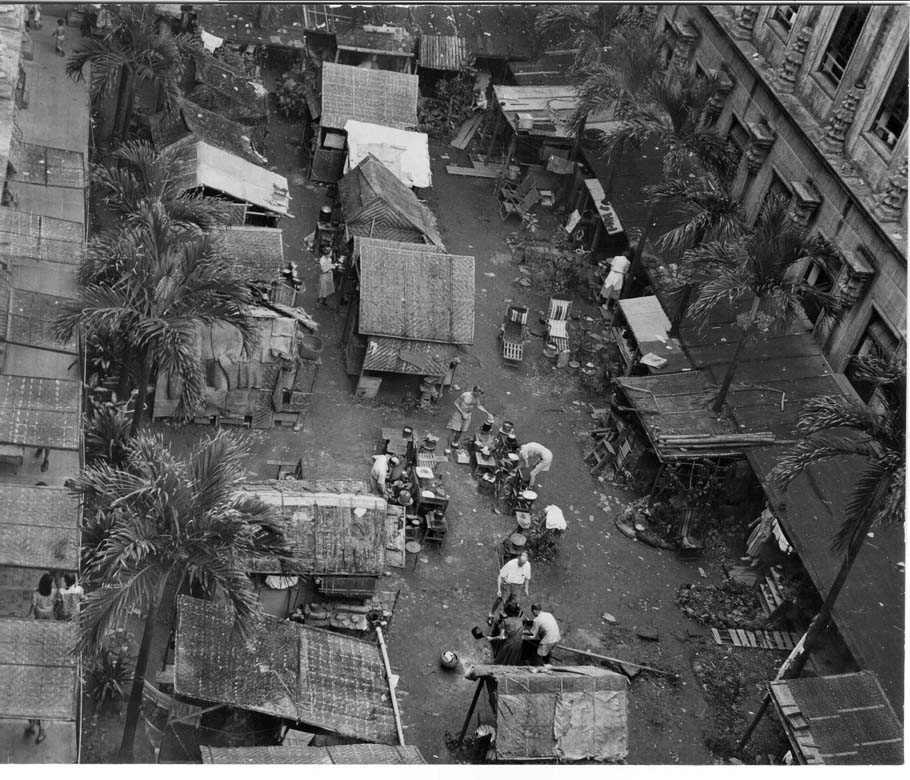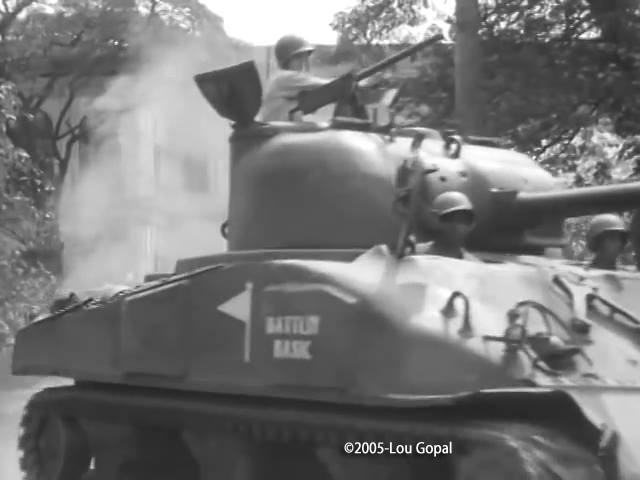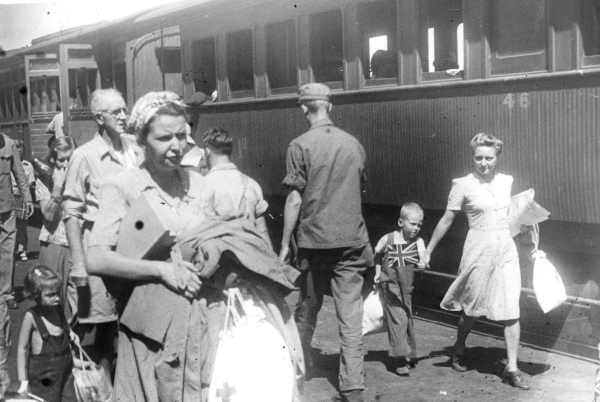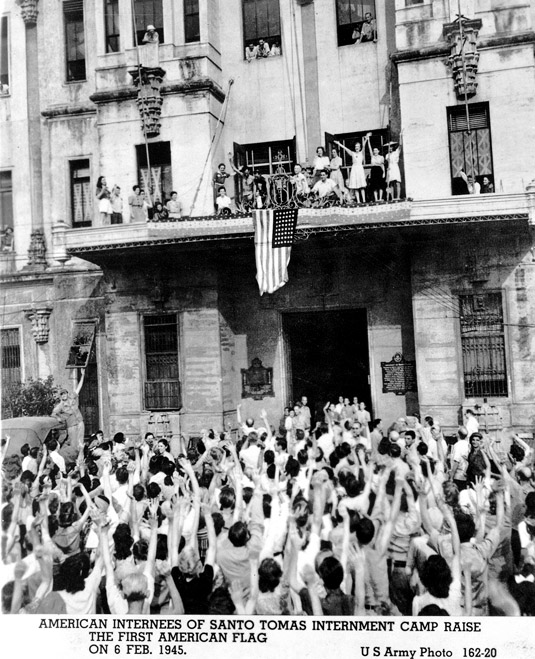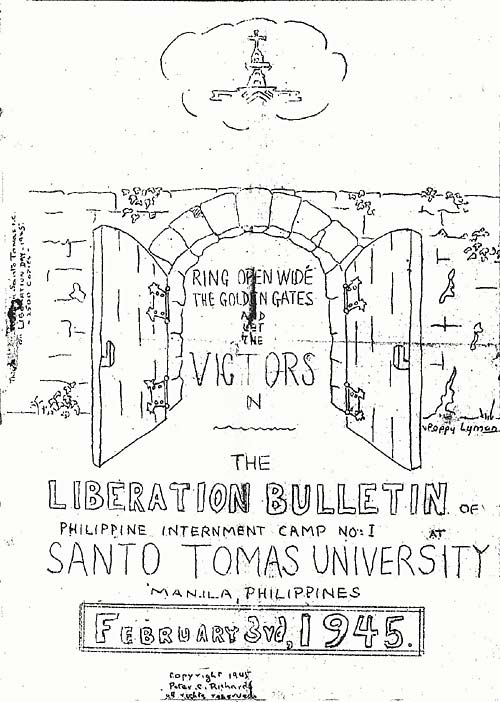It was 70 years ago that the American, British, Canadian and other Allied families, almost 4000, were liberated from their internment at the University of Santo Tomas after over three years of deprivation and systematic starvation at the hands of the Japanese Army.
Their captivity started in January 1942. They were crammed into several buildings and eventually spread out onto the university campus living in cramped rooms, cots and beds infested with lice, and bathrooms that were meant to service only several hundred daytime students; living in shanties which they had to build themselves.
My wife, Michelle and I were privileged to hear the stories of over two dozen of the surviving internees during our research to document this incredible story for our film, Victims of Circumstance. I dedicate this article to all of the civilians who suffered through this ordeal at the Santo Tomas Internment Camp; over 600 of whom died or were killed during this dark period of American and Filipino history.
 My dear friend, former Marine Robert B. Holland was there with the Flying Column that momentous evening. His description captures the event of liberation best. I quote directly from his book, “The Rescue of Santo Tomas Internees – The Flying Column: 100 Miles to Freedom”. Here’s Bob on our flight to Manila in 2005 for the Santo Tomas Internment Camp reunion. He has since passed away.
My dear friend, former Marine Robert B. Holland was there with the Flying Column that momentous evening. His description captures the event of liberation best. I quote directly from his book, “The Rescue of Santo Tomas Internees – The Flying Column: 100 Miles to Freedom”. Here’s Bob on our flight to Manila in 2005 for the Santo Tomas Internment Camp reunion. He has since passed away.
When Gen. MacArthur arrived at 1st Cavalry Division headquarters at Guimba on January 31, 1945, he feared the internees at Santo Tomas and Bilibid would be slaughtered by the Japanese. He gave 1st Cav Division Commander Maj. Gen. Verne Mudge this order: “Go to Manila ! Go around the Japs, bounce off the Japs, save your men, but get to Manila ! Free the internees at Santo Tomas!”
On Saturday, February 3rd, 1945, it was nearly time for the evening roll call at the Santo Tomas Internment Camp in Manila. Among the 3700 emaciated and tattered men, women, and children who had been prisoners of the Japanese there during the three long years since the Fall of Manila, hopes and spirits were high.
American aircraft had been seen and identified by the internees several times during the past few days. Of course the planes were newer models than anybody in the camp had ever seen before, but there was no mistaking the American markings. And if American planes were coming that close, maybe the Japanese were planning to give up Manila as they had been forced to give up Leyte. The change in attitudes of the Japanese prison staff had been noticeable. Discipline was relaxed. The internees knew that meant something was happening, and that things were looking better for them all of the time.
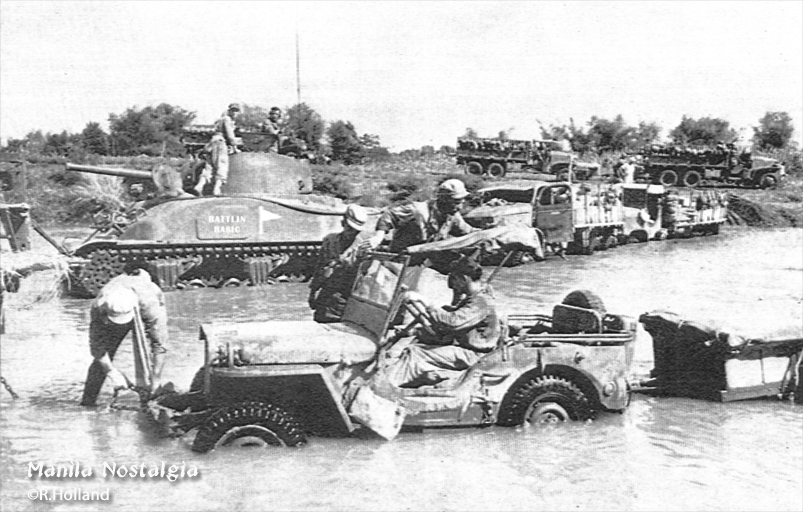
Bob Holland stuck in his jeep while the rest of the 1st Cav wait patiently. Battlin’ Basic is in the background.
At 4:45pm, as the internees went to their quarters for the roll-call, nine Marine SBDs, dive-bombers, among those on station every day supporting the Flying Column, buzzed the prison compound so low that it seemed certain they would take the roof off of the guard tower.
The Japanese guards saved face by ignoring the planes, but every one of the internees who could do so ran to the windows to get a glimpse of the Yank aircraft. The prisoners noticed something their keepers had missed. From one plane a pilot dropped something that landed in the northeast courtyard of the Main Building. One of the Main Building residents quickly retrieved the object, which was found to be a pair of pilot goggles – with a note attached. The note said, “Roll out the barrel. Santa Claus is coming Sunday or Monday.”
As darkness fell, cheering Filipinos shouting “Mabuhay” !” amid the noise of rifle shots could be heard. The roar of internal combustion motors and the clank of metal were audible through the prison windows. One internee said, “They’re our tanks. They’re American tanks !” Another said, “How do you know they’re American tanks? You never saw American tanks ! They are probably Jap tanks retreating.” There was no answer to that. Then the shanty-dwellers began to file into the Main Building. Lieutenant Abiko, the Japanese supervisor of prisoners, had issued the order. “Tell all shanty-dwellers to get into the Main Building within twenty minutes. The Americans are in town.” The shanty dwellers then began to file into the Main Building.
The internees listened anxiously as the firing grew nearer. Stealthy glances from the window revealed little, but throughout the building starved and wrinkled faces broke into smiles and grins. Internees so recently bowed by their long imprisonment now walked on air, hoping, yet fearing to hope, that Santa Claus was really arriving.
They watched the Jap guards go to their posts. They saw two Jap trucks carrying seven Jap soldiers roll hastily out of the front gate as the tumult neared the rear of the compound. In the growing darkness the rattling threads of the tanks became the jingling bells of Santa Claus’ sleigh. Or were they Japanese tanks ? Then the tanks turned left and stopped in front of the main gate. Indistinct voices floated up to the internees leaning out of the windows bent on missing nothing. A flare was sent up. Its light showed the time on the Main Building’s clock. It was 8:50pm. Everything was quiet.
A voice came out of the darkness: “Where the hell is the front gate?” The Americans had arrived for sure. A tank named “Battlin’ Basic”, of the 44th Tank Battalion crashed through the gate Santa Claus in the form of the 1st Cavalry Division had come to liberate the 3,700 internees of Santo Tomas.[ Source: The Rescue of Santo Tomas, R.B. Holland]
The internees’ horrible ordeal had finally ended. For many, it would be another few weeks before being repatriated back to their families in the U.S.

Left to Right: Hugo G. Winkler, 30, proof reader on the Manila Daily Bulletin, who weighed 135 pounds when interned, is now 87; Thomas B. Loft, 55, weighed 160, now 102; Arthur Williamson, 45, exporter, came in weighing 145, now 103; Harold B. Leney, 31, chartered accountant, once weighed 185, now 105; and David Norvell, 38, with Soriano Bros., who came in at 135, now weighs 95.

The first truckload of American Army Nurses, the well-known “Angels of Bataan,” leave Santo Tomas here, where they were imprisoned after their capture by the Japanese on Corregidor Island three years earlier. This would be the start of the long trip back to the United States and home. February 12, 1945 Manila, Philippines
For some it would mean years of rebuilding homes and businesses in Manila that they lost through the ravages of war, and for others a time of grieving for family and friends that did not survive. A few internees were killed after being liberated by the Americans during the days that followed when the Japanese continued to shell the camp.
The Cotterman family established in Manila since 1900 were part of the city’s long term American families. Below, Nana Cotterman is escorted out of camp by her son, Charles Butler (right).

Nana Cotterman leaves her shanty with son Charles Butler for her home in Manila. (courtesy A. Butler)
As they left their confinement, their thanks went out to the many Filipinos who helped them survive their three year internment. Filipino friends, relatives, business acquaintances, and even employees who brought food, medicines, support of friendship and acts of kindness without which their plight would have been utterly hopeless.
Liberation was bittersweet, as while most of the internees were freed, there was an interminable wait when the Japanese held men and boys hostage in the Education Building for several days. The Japanese finally negotiated a surrender and were allowed to leave the campus accompanied by the U.S. military and one of the internees, Ernest Stanley who acted as an interpreter. They were marched off and released. Rumor has it that guerillas ended their fate quite abruptly.
For the full story which includes photos, film and interviews from the internees themselves, view our documentary on YouTube.
click on the link to order a new book by Patty Croft Stevens, a former internee who has written about her experiences in pre-war Manila and her time interned at Santo Tomas with her family. https://oklahomabooksonline.com/books/ols/products/waiting-for-america


